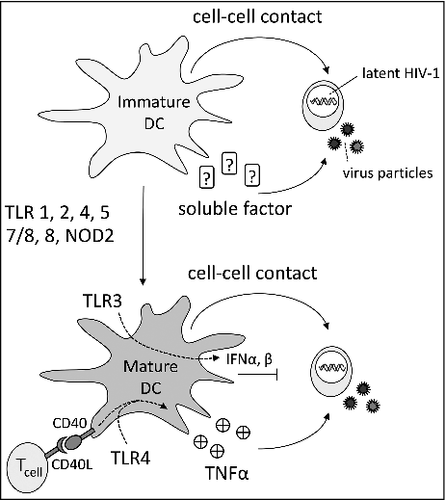Figures & data
Figure 1. DC-mediated purging of latency. Immature DCs are able to revert HIV-1 latency in primary T cells upon cell-cell contact or via secretion of an unknown soluble natural LRA. Purging latent HIV-1 can also be achieved with mature DCs stimulated with TLR 1,2,4,5,7/8,8 or NOD2. TLR3 stimulated DCs probably can revert latency, but additional production of IFNα and β negate latency reversion capacities.Citation23 DCs can revert latency via secretion of TNFα. This can be achieved by stimulating DCs with TLR4 or upon contact with T cells in a CD40/CD40-ligand dependent manner.Citation8

